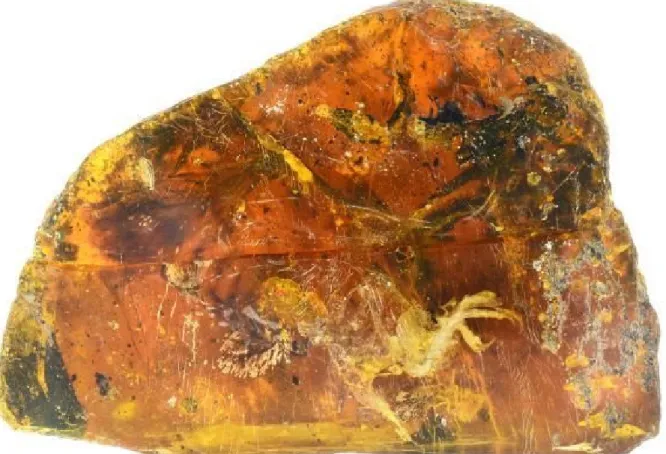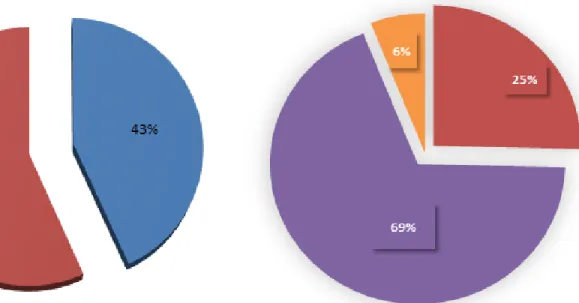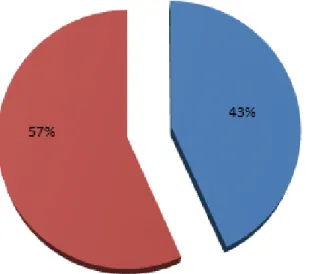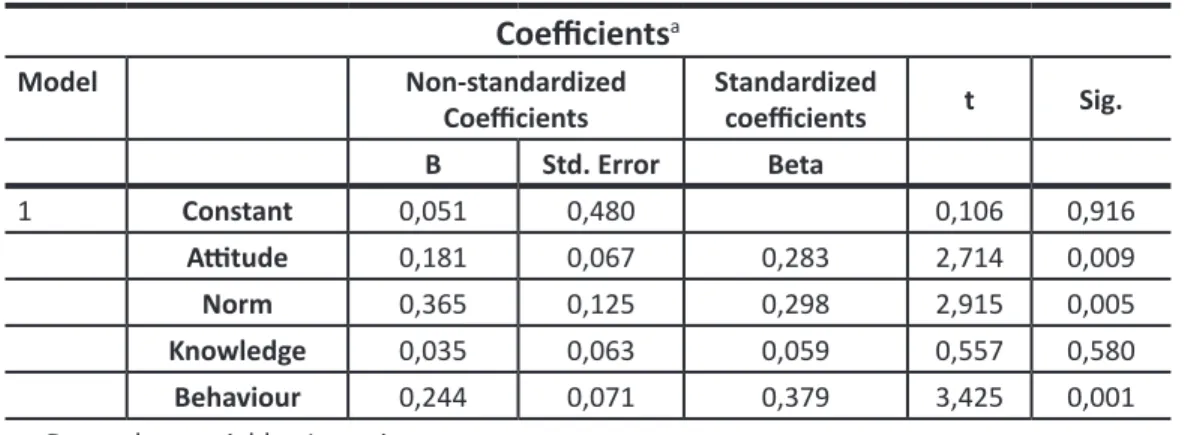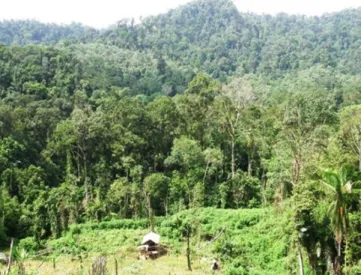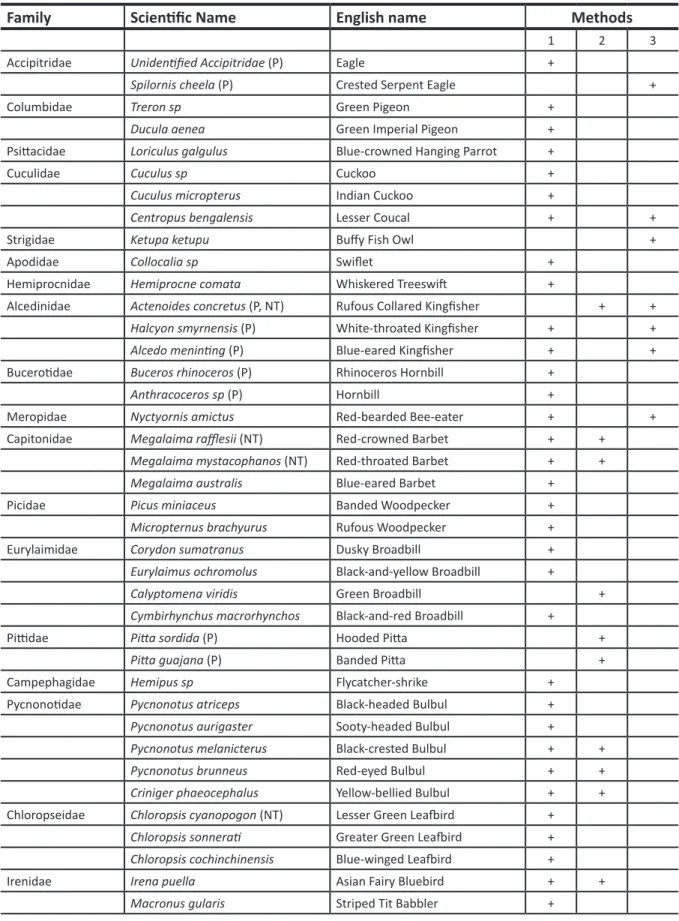Like the oldest previously reported microfossils – samples from western Australia dating back to around 3.46 billion years ago – the new discovery is set to be the subject of heated debate. After the extinction of the Javan tiger (Panthera tigris sondaica) and the Balinese tiger (Panthera tigris balica) in the middle and late 20th century, the Sumatran tiger is the only tiger species left in Indonesia (WWF, 2011).
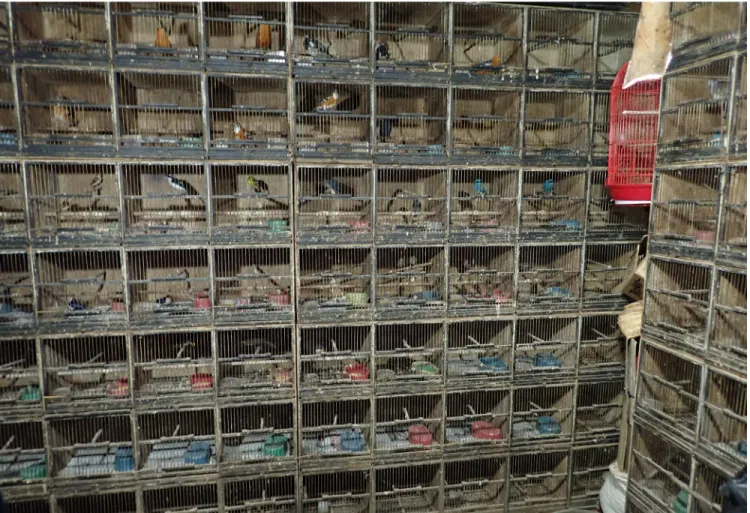
Results and Discussion
We developed a questionnaire to measure attitudes, norms and perceptions as determinants of the intention to participate in conservation efforts in accordance with the theory of planned behavior (Theory of Planned Behavior (BAL) 1991). What is the relationship pattern (if any?) regarding attitudes, norms, behavior and knowledge with the intention to participate in conservation in Aceh. The result of the multiple linear regression analysis showed significant relationship (p <0.05) between attitude, norm and optimism with participation intention; while there is no significant relationship between knowledge and the intention to participate in conservation.
Relationships between attitudes, norms, behavior and knowledge related to the intention to participate in conservation activities. For example, the intention to participate in nature conservation in Aceh is determined more by norms (Islam) than by attitude and behaviour. The relationship between attitude, norm, behavior and knowledge with the intention to participate in conservation suggests that 'intention' is closely related to 'norm' compared to attitude and behavior (R = 0.668).

Acknowledgement
Therefore, the priority order of interventions to increase conservation intentions in Aceh is norms, behaviors and attitudes. Our findings suggest that religious and community leaders can play an important role in conservation by enhancing community intentions to engage in wildlife and forest conservation in Aceh. Our findings also suggest that respondents believe that participation in wildlife conservation can improve livelihoods through income-generating activities related to ecotourism.
The four variables attitude, norm, knowledge and behavior can contribute to wildlife conservation efforts 41.1% (Table 3), which means that conservation interventions in Aceh should prioritize "norms" over behavior and attitude. The people of Aceh already score high on attitudes, norms, behavior and knowledge as capital to participate in conservation, but future conservation intervention may benefit from involving religious and community leaders. This may also be the most cost-effective way to raise awareness of the conservation needs in Aceh.
The attitude of subject norms in this study raises the question of what role religious and community leaders can play in contributing to wildlife conservation and conservation in general. Our research suggests that people generally have enough time and money to take an active role in preserving the forest and have a passion for conservation. Specifically for Aceh, knowledge does not appear to be related to intention and therefore raising awareness of conservation by increasing knowledge is unlikely to be as effective as "raising awareness" through "norms".
Introduction
A rapid bird survey in Bukit Puar, Kerinci Seblat National Park; with notes on different survey methods
This survey is the first bird diversity survey to be conducted in the Bukit Puar area of KSNP. A list of species recorded between April 18 and 22, 2016, and methods used to detect bird occurrence in Bukit Puar, Kerinci Seblat National Park. Our studies in Bukit Puar suggest that the area is an important habitat for a range of bird species.
Long-billed echidnas are slow-moving, nocturnal monotremes that reach lengths of up to 75 cm and weigh 5 to 10 kg (Leary et al., 2016a). There are three species of long-billed echidnas in the genus Zaglossus, all occurring in Indonesia (Table 1). Here, we report seizures of the critically endangered western long-billed echidna, Zaglossus bruijnii, that occurred in the Philippines in 2014.
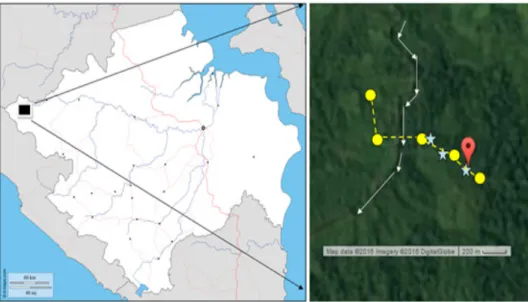
First record of international trafficking of Critically Endangered long-beaked echidnas (Zaglossus sp.)
Recently, there has been evidence that long-billed echidnas Zaglossus species are also illegally entering international trade. First record of international trade in critically endangered long-billed echidnas (Zaglossus sp.). PNG) and one, western long-beaked echidna Zaglossus bruijnii, occurs in Australia, although it may now be extinct there (Leary et al., 2016b). Two species of long-billed echidnas are assessed as critically endangered and one as vulnerable (Table 1).
The animals were identified to species level in only three of the cases, all being the critically endangered western long-billed echidna Zaglossus bruijnii. More recently, two seizures of the critically endangered western long-beaked echidna Zaglossus bruijnii were made in the Philippines in 2014. The suspects involved in the smuggling of the long-beaked echidnas and other Indonesian wildlife were charged in court with illegal possession and transportation of wildlife.
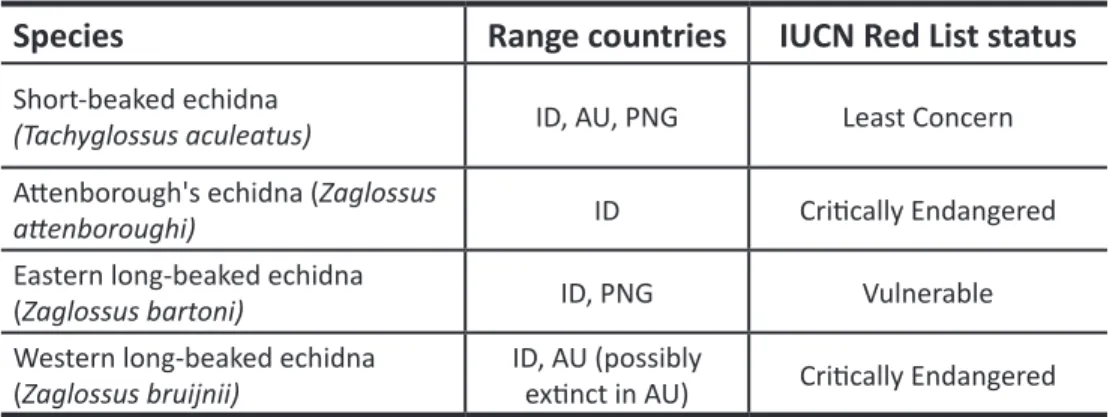
Discussion
While exporting countries are listed in each case, it is unfortunate that in only one case, in 1986, is the country of origin listed - in this case Papua New Guinea (PNG), although Indonesia and Australia are listed as exporters in two of the theirs. cases respectively. Three of the countries for which the origin of the animals is not named are not countries in the area. In five of the cases, the purpose of trade is listed, with one being for science (S), two for commercial trade (T) and two for zoos (Z).
Act, all the echidnas were seized through joint action by the Department of Environment and Natural Resources, Philippine National Police, Philippine Coast Guard and Philippine Port Authority. The echidnas seized at the Lipata Port in Surigao City have apparently escaped and the fate of the animal in the Municipality of Glan is unknown, although it is believed to have died. The identity of the species must be determined and recorded in all future seizures and registered in a database, so that data can be used to measure whether these species are indeed subject to an increasing demand, after which appropriate action can be taken.
Recommendations
Acknowledgements
Wildlife trade from ASEAN to the EU: Problems with the trade in captive-bred reptiles from Indonesia. As early as 1872, Alfred Russel Wallace traveled to the area and recorded an impressive diversity of fauna, including the now extinct in Peninsular Malaysia Sumatran rhinoceros (Dicerorhinus sumatrensis). The survey focused on three hilly areas, Bukit Tukau, Bukit Belading and Bukit Reban Kambing adjacent to Gunung Ledang National Park, Malaysia.
Johor State Authorities plan to gazette the area as part of Gunung Ledang State Park and rename it Royal Ledang State Park. Bukit Tukau, Bukit Belading and Bukit Reban Kambing constitute watersheds in the Tangkak landscape, but to date few biodiversity surveys have been conducted in the area. Fauna diversity recorded by camera traps in Bukit Tukau, Bukit Belading and Bukit Reban Kambing, Malaysia.
Fauna diversity recorded by camera traps in Bukit Tukau, Bukit Belading and Bukit Reban Kambing, Malaysia
Mount Ophir (Gunung Ledang) in Tangkak, Johor, West Malaysia was declared as Johor State Park on October 3, 2005 with an area of 8,611 hectares.
Results and Conclusion
Glossy Ibis Plegadis falcinellus is a small ibis, measuring 56-63 cm in height and weighing 500-800 g, and is a dark bird with a striking shade of bronze green (Hancock et al., 1992). The glossy ibis is the most widespread species of ibis and is found on all continents except Antarctica (Hancock et al., 1992). In Indonesia, it grows in Java and Sulawesi and is a visitor to Kalimantan, Flores, Sumba, Timor, Kai, Tanimbar, Halmahera, Ternate (Eaton et al., 2016).
While the Glossy Ibis may not be a large ibis species, it is considered a large bird in the cage bird market. The Glossy Ibis is rated as Least Concern (LC) by the IUCN Red List of Threatened Species (BirdLife International, 2016), and while the assessment states that Glossy Ibis are threatened by the loss and degradation of their wetland habitats, the use of pesticides and hunting, the trade of live birds for pets is not mentioned (BirdLife International, 2016). Perhaps most importantly, this observation is important as the Glossy Ibis is protected by law in Indonesia, making possession and trade of this species illegal.
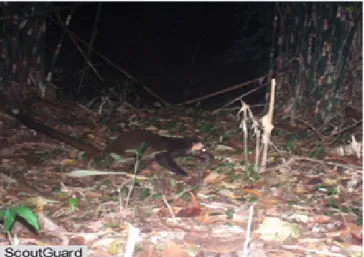
Observations of Glossy Ibis Plegadis falcinellus in trade in bird markets in Java, Indonesia
In Indonesia, a wide range of species, both protected and non-protected, are regularly observed openly for sale in bird markets in most major cities throughout the country (Shepherd et al., 2004; Chng et al., 2015; Chng and Eaton, 2016 ). 5, 1990 regarding the conservation of living resources and their ecosystems, any violation of the law carries a maximum penalty of five years in prison and/or a fine of up to IDR 100 million (~US$7,400). Systematic surveys have been conducted in Indonesia's bird markets for decades and this is the first record of a Glossy Ibis, indicating limited demand for this species to date (e.g.
However, it is important to record the current observation and look out for further trade in this species in future studies, as trading trends can change quickly. Future sightings of Glossy Ibis in commerce should be recorded and reported to the Natural Resources Conservation Agency (BKSDA), as the agency responsible for enforcing bird protection laws in Indonesia, under the Directorate General for Conservation of natural resources and ecosystems (KSDAE). . Those caught violating national law should be prosecuted to the fullest extent of the law to deter the illegal trade in birds, and markets where illegal trade continues should be closed.
Guidelines for Authors
It should be informative and understandable without reference to the text, and should not contain any references or undefined abbreviations. Provide the year of publication in the text (Bird, 2010) and in the Literature Cited section, provide the volume number, and substitute "in print" for page numbers (Bird, I.M. Papers in review should be cited as unpublished and should not be in the Literature Cited section.
Software: Capitalize the first letter only if the program name is a word (eg Vortex, ArcGIS). Tables, figures and plates: should be self-explanatory, each on its own page and with an appropriate title. English names should be lowercased throughout unless they contain a proper name (eg Asian elephant, Cookson's wildebeest, long-billed vulture).
Contents
